Standing on Oregon’s dramatic southern coast like a sentinel against the Pacific, Cape Blanco State Park offers visitors something truly extraordinary a chance to stand at the westernmost point of the state while being surrounded by some of the most breathtaking coastal scenery you’ll find anywhere. This remarkable destination combines rugged natural beauty with fascinating history, creating an experience that captures the essence of what makes the Oregon coast so beloved.
Cape Blanco State Park isn’t just another pretty coastal stop; it’s a place where 1,800 acres of pristine wilderness meet the endless Pacific horizon. The park’s crown jewel is Oregon’s oldest lighthouse, still standing proudly after more than 150 years of guiding ships safely home. Whether you’re planning cape blanco state park camping adventures, seeking spectacular cape blanco state park photos, or simply wanting to explore one of Oregon’s most unique coastal environments, this guide will help you discover everything this incredible destination has to offer.
From the moment you arrive, you’ll understand why this park has captured the hearts of countless visitors. The combination of towering sea cliffs, expansive beaches, dense coastal forests, and rolling meadows creates a landscape that feels almost otherworldly in its beauty and diversity.
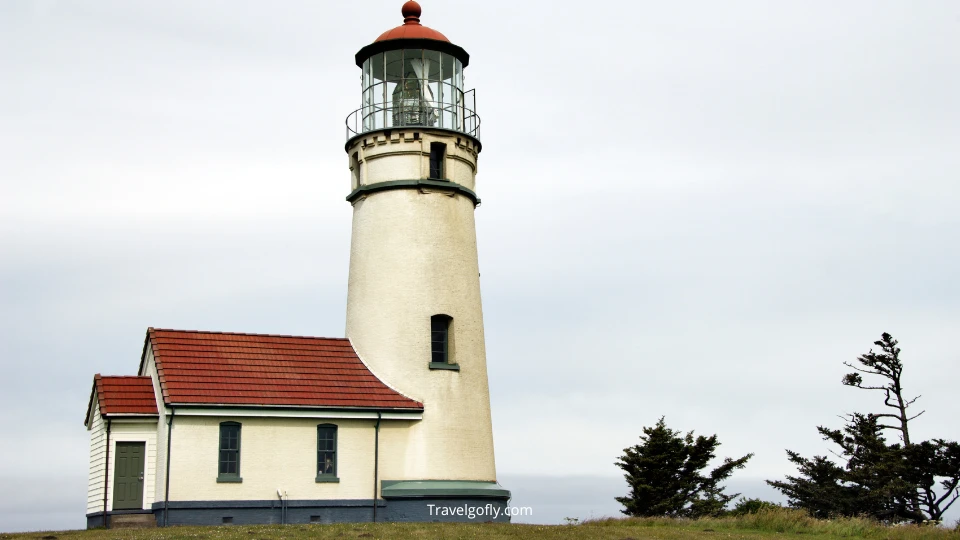
Where Is Cape Blanco State Park Located?
Reaching Cape Blanco State Park requires a bit of a journey, but the drive itself becomes part of the adventure. The park is located approximately 46 miles north of Gold Beach and about 9 miles north of Port Orford along scenic Highway 101. If you’re traveling from major Oregon cities, plan for a 5-hour drive from Portland or about 4 hours from Eugene.
The most straightforward route involves taking Highway 101 north from Gold Beach or south from Brookings. Look for the well-marked Cape Blanco State Park signs you’ll turn west onto Cape Blanco Road and follow it for about 5 miles to reach the park entrance. The road winds through beautiful pastoral landscapes and coastal forest before opening up to reveal the spectacular cape.
For visitors coming from inland areas, you can take Highway 42 west from I-5 near Coquille, which connects to Highway 101 near Bandon. This route offers lovely views of the Sixes River valley and is particularly beautiful during fall months when the deciduous trees display their autumn colors.
The nearest towns for supplies and services are Port Orford (9 miles south) and Sixes (5 miles east). Port Orford offers grocery stores, restaurants, and fuel, making it the best stop for last-minute provisions before heading to the park. The drive from Port Orford provides stunning coastal views that serve as a perfect preview of what awaits you at Cape Blanco.
Public transportation options are extremely limited in this remote area, so a personal vehicle is essentially required for accessing the park. The roads are generally well-maintained, though they can be narrow and winding in places, particularly the final approach to the lighthouse.
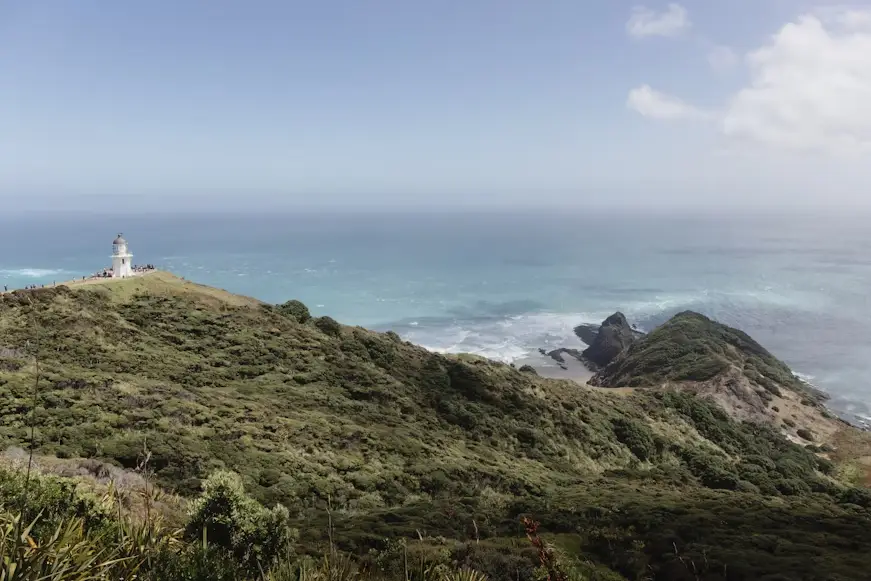
A Journey Through Cape Blanco’s Rich History
Cape Blanco’s story begins long before European explorers first glimpsed its distinctive white cliffs. The area has been home to indigenous peoples for thousands of years, with the Coquille and Tututni tribes utilizing the rich coastal resources for fishing, gathering, and seasonal camps. The abundance of salmon in the nearby Sixes River and the diverse marine life along the coast made this region particularly valuable to Native American communities.
The cape earned its name from Spanish explorer Martín de Aguilar, who spotted the brilliant white chalky cliffs in 1603 and called it “Cabo Blanco” (White Cape). These distinctive cliffs, composed of ancient marine sediments and fossils, stand out dramatically against the typically darker Oregon coastline, making them a natural landmark for early maritime navigation.
The area’s modern development began in the 1860s when Irish immigrant Patrick Hughes established a prosperous dairy ranch on the cape’s fertile meadowlands. Hughes built the elegant Victorian farmhouse that still stands today the Hughes House which was designed by renowned architect Pehr Johan Lindberg in 1898. The house represented the height of prosperity for coastal ranching and remains one of Oregon’s best-preserved examples of rural Victorian architecture.
The lighthouse, constructed in 1873, holds the distinction of being Oregon’s oldest lighthouse still in operation. Its strategic location 200 feet above sea level made it crucial for safe navigation along this treacherous stretch of coast. The lighthouse’s second-order Fresnel lens, manufactured in France, cast its beam 22 miles out to sea, guiding countless vessels safely past the rocky headlands.
During World War II, the area took on new significance as part of coastal defense efforts. The nearby Port Orford Lifeboat Station, established in 1934, played a crucial role in maritime rescue operations. Coast Guard personnel stationed here conducted numerous dramatic rescues in the challenging waters off Cape Blanco, adding another layer to the area’s rich maritime heritage.
The transformation from working ranch to state park began in the 1970s when Oregon State Parks acquired the property to preserve its unique natural and cultural resources. Today, visitors can explore both the natural wonders and human history that make Cape Blanco such a compelling destination.
| Year | Event |
|---|---|
| 1603 | Named “Cabo Blanco” by Spanish explorer Martín de Aguilar |
| 1860s | Patrick Hughes establishes dairy ranch |
| 1873 | Cape Blanco Lighthouse begins operation |
| 1898 | Hughes House completed |
| 1934 | Port Orford Lifeboat Station established |
| 1970s | Area acquired by Oregon State Parks |
Top Things to Do at Cape Blanco State Park
Cape Blanco State Park offers an impressive array of activities that cater to outdoor enthusiasts of all interests and skill levels. The park’s diverse landscape from rugged coastline to peaceful meadows creates opportunities for both adventurous exploration and relaxing contemplation.
Explore the Iconic Cape Blanco Lighthouse
The iconic Cape Blanco Lighthouse offers guided tours from April through October, Wednesday through Monday, 10 a.m. to 3:30 p.m. These informative tours, managed by the Bureau of Land Management in partnership with the Cape Blanco Heritage Society, provide fascinating insights into maritime history and lighthouse operations. Tours cost $2 for adults and are free for youth 15 and younger.
The historic Hughes House, when open for tours (check current schedules as it undergoes periodic renovations), offers a glimpse into the prosperous ranching life of the late 1800s. The elegantly restored Victorian farmhouse showcases period furnishings and tells the story of the Hughes family’s successful dairy operation.
Discover Scenic Hiking Trails
More than eight miles of hiking trails wind through the park, leading to beaches, ocean viewpoints, fishing spots along the Sixes River, and the lighthouse. The trail system offers options for every fitness level and interest.
The Beach Access Trail provides the most direct route to the spectacular south beach, where the towering Needle Rock creates a dramatic backdrop for photography and exploration. This trail descends through coastal vegetation and offers increasingly spectacular ocean views as you approach the beach.
For a longer adventure, the Hughes House Trail takes you through dense coastal forests to reach the historic farmhouse. This trail showcases the park’s diverse ecosystems, transitioning from open meadows through Sitka spruce and shore pine forests.
The Bluff Trail offers some of the most spectacular coastal views in the park, though trail conditions can vary seasonally. Recent reports suggest some sections may need maintenance, so check current conditions before heading out.
Enjoy the Beaches and Coastal Scenery
Cape Blanco’s beaches offer world-class opportunities for beachcombing, tide pooling, and coastal photography. The south beach, accessible via hiking trail, features the dramatic Needle Rock formation and excellent spots for watching sunset. The expansive sandy areas provide perfect settings for picnicking and beach games.
Rock hounds will find the beaches particularly rewarding, with opportunities to discover agates, interesting driftwood, and various coastal fossils. The changing tides constantly reveal new treasures, making each visit unique.
Fishing in Cape Blanco State Park
The nearby Sixes River offers excellent salmon and steelhead fishing opportunities, particularly during fall runs. Surf fishing from the beaches can yield rockfish, lingcod, and occasional salmon. Oregon fishing licenses are required, and visitors should check current regulations and seasons.
Horseback Riding Along the Coast
Equestrian enthusiasts can enjoy seven miles of horse trails plus a 150-acre open riding area. The park’s horse camp provides specialized facilities for visitors traveling with horses, including corrals and water access.
Wildlife & Photography Highlights
Cape Blanco State Park ranks among Oregon’s premier locations for coastal photography. The combination of dramatic cliffs, historic lighthouse, expansive ocean views, and diverse wildlife creates endless opportunities for capturing memorable images.
Wildlife viewing opportunities abound throughout the year. Gray whales migrate past the cape during spring and fall, providing spectacular viewing from the lighthouse area. The park’s diverse habitats support numerous bird species, making it popular with birding enthusiasts.
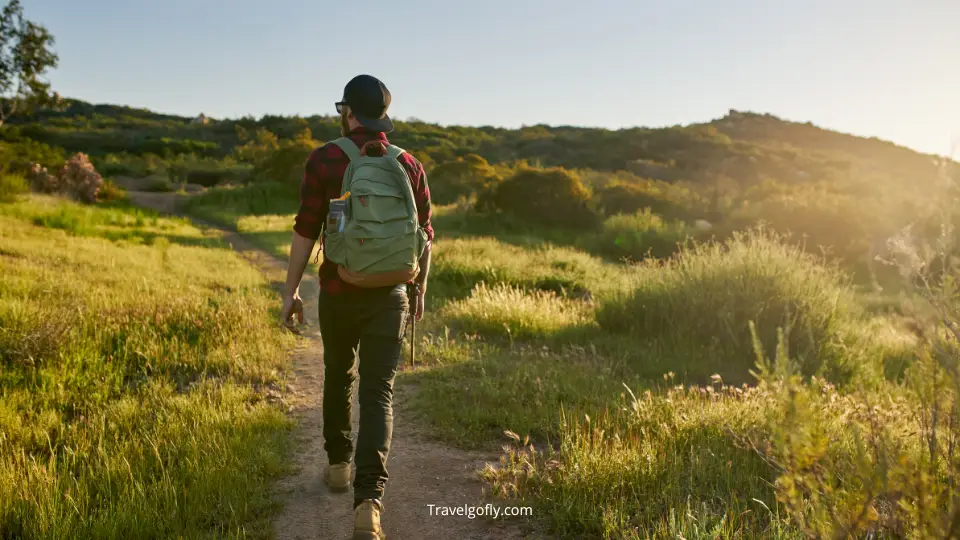
Cape Blanco State Park Camping Guide
Cape Blanco State Park campground provides one of the Oregon coast’s most scenic camping experiences, with sites that offer either forest seclusion or expansive ocean views. The cape blanco state park campground has earned a reputation for its well-maintained facilities and spectacular setting.
Campground Fees and Facilities Overview
The average cost for RV camping at Cape Blanco State Park is $31 per night for full hookups and $18 per night for horse campsites. Out-of-state residents pay a 25% surcharge for hookup sites, reflecting Oregon’s policy of providing resident discounts.
The campground features 53 sites total, including both RV and tent camping options. Sites vary in size and amenities, with some offering full hookups (water, electric, and sewer) while others provide electric and water only. The park’s sites are notably spacious and well-separated, providing privacy that’s often lacking in more crowded coastal campgrounds.
Each campsite fee includes parking for one vehicle, with a second vehicle allowed for an additional $10 per night. The park now offers online registration for extra vehicles when booking, streamlining the check-in process.
Cape Blanco Horse Camps
Horse campers can enjoy twelve specialized sites with pipe corrals and access to 150 acres of open riding area. These sites cater specifically to equestrian visitors and provide direct access to the park’s extensive trail system.
Cozy Cape Blanco Cabins
Reservations are required for cabins, and these popular accommodations book quickly, especially during peak season. The cabins offer a comfortable alternative to tent camping while maintaining the outdoor experience. They typically include basic amenities like beds, heating, and electricity, though visitors should bring their own bedding and cooking supplies.
Reservation Information
Given the park’s popularity, especially during summer months, advance reservations are strongly recommended. Reservations can be made through ReserveAmerica, Oregon’s official campground reservation system. The park typically opens for reservations several months in advance.
Hotels and Lodging Near Cape Blanco
For visitors preferring indoor accommodations or when the park is full, several options exist in nearby communities:
Port Orford (9 miles south) offers several bed-and-breakfasts, motels, and vacation rentals. The town’s elevated location provides ocean views from many accommodations and easy access to restaurants and services.
Gold Beach (46 miles south) provides the widest selection of hotels, resorts, and vacation rentals, making it suitable for visitors wanting more amenities while using Cape Blanco as a day-trip destination.
Bandon (35 miles north) offers upscale resort options and is famous for its golf courses, providing a luxurious base for exploring the southern Oregon coast.
Essential Camping Tips
The cape’s exposed location means weather can change quickly, so come prepared for wind and potential temperature swings. Even summer evenings can be cool, making warm layers essential. The park’s elevation and exposure to ocean winds create unique microclimates that can differ significantly from inland areas.
[IMAGE: Cape Blanco State Park campground with RVs and tents situated among coastal vegetation with ocean views]
Visitor Information & Park Essentials
Planning a successful visit to Cape Blanco State Park requires understanding the practical details that will help you make the most of your time at this remarkable destination.
Park Hours and Entry Fees
Cape Blanco State Park remains open year-round, with campground and day-use areas accessible 24 hours. However, specific facilities have varying schedules. The lighthouse tours operate from April 1 through October 31, Wednesday through Monday, 10 a.m. to 3:30 p.m., with gates closing at 3:30 p.m.
Oregon State Parks require a day-use permit for parking, which costs $5 per vehicle. Annual permits are available for frequent visitors and provide excellent value for those planning multiple park visits throughout Oregon. Camping fees are separate from day-use permits and vary based on site type and amenities.
Parking areas near the lighthouse and Hughes House can fill quickly during peak season, particularly on weekends and holidays. Arriving early in the day ensures better parking availability and allows you to experience the park’s attractions before crowds arrive.
Parking, Facilities, and Amenities
The park provides restroom facilities near the campground and at key day-use areas. Fresh water is available at the campground and some trailheads. Picnic tables and fire rings are provided at designated areas throughout the park.
The visitor information area near the lighthouse includes interpretive displays about the park’s natural and cultural history. Rangers and volunteers are often available to answer questions and provide current information about trail conditions and wildlife viewing opportunities.
A detailed cape blanco state park map is available at the entrance station and online through Oregon State Parks. The map shows trail systems, camping areas, facilities, and points of interest. Given the park’s size and diverse attractions, studying the map before your visit helps maximize your time.
Cell phone coverage can be spotty throughout the park, so downloading offline maps or carrying a physical map is recommended for navigation, especially if you plan extensive hiking.
Park Rules & Pet Regulations
Pets are allowed at Cape Blanco State Park but must remain on leash and under control at all times. Pet owners are responsible for cleaning up after their animals and ensuring they don’t disturb wildlife or other visitors.
Campfires are permitted only in designated fire rings during appropriate seasons. Fire restrictions may be imposed during high-risk periods, so check current conditions before your visit.
Fishing requires valid Oregon licenses, and visitors must follow state regulations regarding seasons, limits, and methods. The nearby Sixes River and coastal areas offer different regulations that anglers should understand before fishing.
Accessibility Information
Some areas of the park are accessible to visitors with mobility limitations, though the rugged coastal terrain presents natural challenges. The lighthouse area and some picnic spots can be reached via paved or improved surfaces. Specific accessibility information is available through Oregon State Parks.
Cape Blanco Weather and Conditions
Cape Blanco state park weather can be highly variable due to its exposed coastal location. Summer temperatures typically range from the mid-50s to low 70s Fahrenheit, with frequent fog and wind. Winter brings more dramatic weather, with storms creating spectacular wave action but potentially dangerous conditions.
Wind is a constant factor throughout the year, often reaching 20-30 mph or higher during storms. Even on calm days, the cape’s elevation and exposure mean conditions can be significantly windier than nearby inland areas.
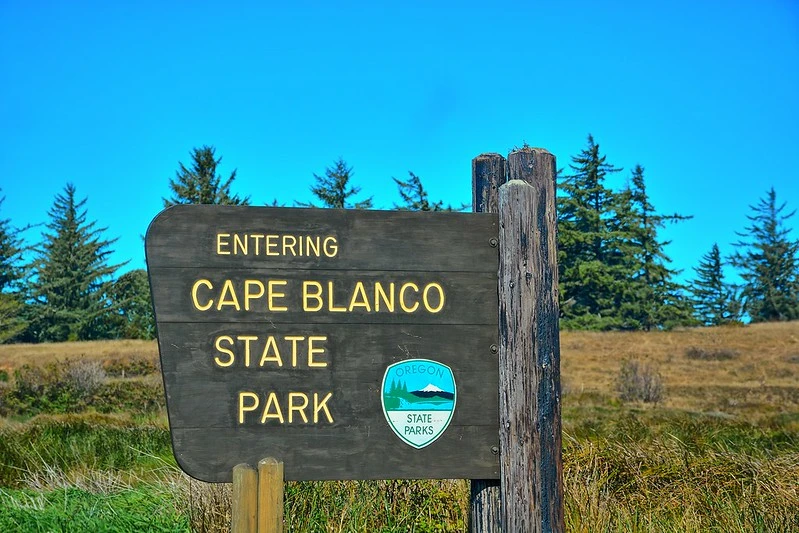
Local Tips from Experienced Visitors
Having spent countless hours exploring Cape Blanco State Park and speaking with rangers, longtime visitors, and local guides, I’ve gathered insider knowledge that can significantly enhance your experience at this remarkable destination.
Best Time to Visit Cape Blanco
While Cape Blanco offers beauty year-round, timing your visit can make a substantial difference in your experience. Late spring through early fall (May through September) provides the most reliable weather and full access to all facilities. However, some of my most memorable visits have been during the dramatic winter storm season, when massive waves crash against the cliffs creating unforgettable displays of nature’s power.
For photographers, the “golden hours” around sunrise and sunset are particularly spectacular at Cape Blanco. The lighthouse positioned on the white cliffs creates stunning silhouettes against colorful skies. Winter storms can produce remarkable wave action photos, but always maintain safe distances from cliff edges.
Weekdays generally offer more solitude and better parking availability. If you must visit on weekends, arrive early by 9 a.m. to secure parking near popular areas like the lighthouse.
What to Pack for Your Trip
Even summer visitors should bring warm layers, as temperatures can drop quickly when fog rolls in or evening approaches. A waterproof jacket is essential year-round due to frequent coastal drizzle and unpredictable weather changes.
Sturdy hiking shoes with good traction are crucial for safely navigating cliff-top trails and beach access paths. The combination of ocean mist and wind can create slippery conditions on wooden steps and rock surfaces.
Bring a headlamp or flashlight even for day visits, as coastal fog can dramatically reduce visibility. Extra batteries for cameras and phones are wise, as the remote location offers limited charging opportunities.
Hidden Gems & Secret Spots
Many visitors focus solely on the lighthouse area, but some of the park’s most rewarding experiences lie off the beaten path. The north meadow area offers spectacular wildflower displays in spring and provides excellent whale watching opportunities during migration seasons.
Local photographers often recommend the area just south of the lighthouse for sunset shots that include both the historic structure and Needle Rock in the composition. This vantage point requires a short walk from the main parking area but offers unique perspectives unavailable from more crowded viewpoints.
The Sixes River mouth, accessible via trail from the campground area, provides excellent bird watching opportunities and often has fewer crowds than the main lighthouse area. Early morning visits frequently reward patient observers with wildlife sightings.
Local Advice and Safety Tips
Fill your gas tank in Port Orford before heading to the park the nearest fuel is 9 miles away, and coastal weather can sometimes create unexpected delays.
Cell phone service is inconsistent throughout the park, so inform others of your planned return time if hiking alone. The remote location means help might be far away in emergencies.
Local markets in Port Orford offer fresh seafood and locally-made goods that can enhance campground meals. The Port Orford Saturday Market (seasonal) features local produce and crafts that make excellent souvenirs.
Dealing with Fog and Wind
Fog is common along the Oregon coast but often burns off by late morning. If you arrive to foggy conditions, consider exploring inland areas like the Hughes House trail first, then returning to coastal viewpoints later in the day.
Wind is nearly constant at Cape Blanco, so secure all lightweight items in camp and while hiking. Tent campers should bring extra stakes and guy lines the standard equipment that comes with most tents isn’t sufficient for the cape’s conditions.
Photography Tips for Stunning Shots
The white chalky cliffs can fool camera exposure meters, leading to underexposed images. Shoot in RAW format if possible and consider using exposure compensation to maintain detail in both the bright cliffs and darker ocean.
Coastal conditions can be hard on camera equipment, so bring lens cloths and protective bags. Salt spray can accumulate on lenses even on seemingly calm days.
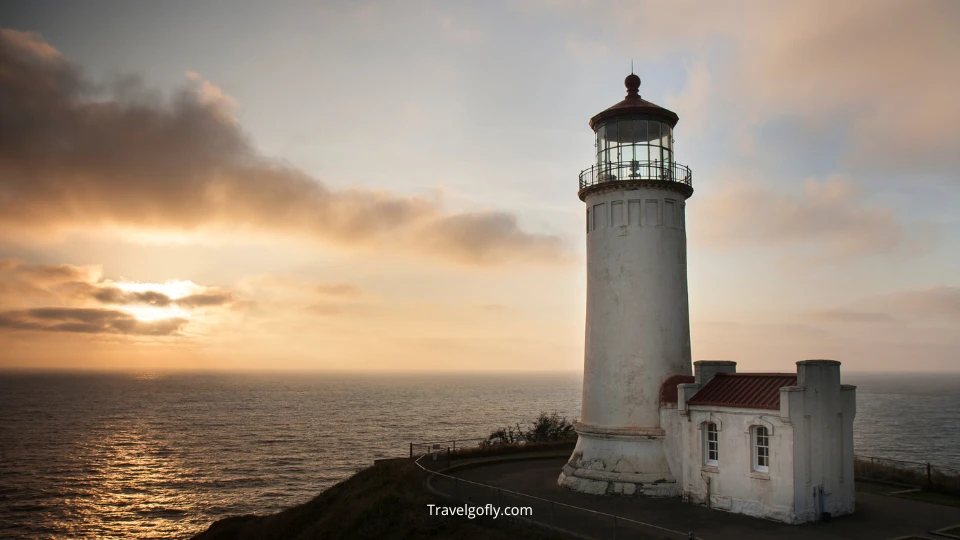
Cape Blanco State Park: Frequently Asked Questions
Can you go inside the Cape Blanco Lighthouse?
Tours of the Cape Blanco Lighthouse are available from April through October 31, Wednesday through Monday, 10 a.m. to 3:30 p.m., costing $2 for adults and free for youth 15 and younger. However, access to the lighthouse tower itself has been limited since 2021 for safety reasons. Visitors can tour the lighthouse grounds and visit the interpretive center, but climbing to the top is no longer available. The exterior views and historical information provided during tours remain excellent, and the lighthouse’s second-order Fresnel lens can be viewed from the base.
Are dogs allowed at Cape Blanco State Park?
Yes, pets are allowed at Cape Blanco State Park, but they must remain on leash at all times and under their owner’s control. Dogs are welcome on trails, in camping areas, and in day-use areas. Pet owners are responsible for cleaning up after their animals and ensuring they don’t disturb wildlife, other visitors, or sensitive habitat areas. Beach areas are particularly popular with dog owners, but keep in mind that the strong winds and waves can be overwhelming for some pets.
What’s the best time of year to visit Cape Blanco State Park?
The optimal visiting season depends on your interests and tolerance for weather. May through September offers the most stable weather, warmest temperatures, and full facility access. Summer brings the most reliable sunshine, though fog and wind remain common. Spring (April-May) features spectacular wildflower blooms and whale migration viewing. Fall offers dramatic storm watching and fewer crowds. Winter visits can be rewarding for storm watchers and photographers, but weather conditions can be challenging and some facilities may have limited hours.
How far is Cape Blanco State Park from major Oregon cities?
Cape Blanco State Park is located on the remote southern Oregon coast, requiring significant drive time from major population centers. From Portland, expect approximately 5 hours of driving via Highway 18 to Highway 101 south. From Eugene, the drive takes about 4 hours via Highway 126 west to Highway 101. From Medford, allow about 3.5 hours via Highway 42 west. The remote location is part of the park’s appeal, offering an escape from urban areas, but plan accordingly for fuel, supplies, and travel time.
Can you camp at Cape Blanco State Park year-round?
Yes, cape blanco state park camping is available year-round, though conditions and amenities vary by season. The campground remains open throughout the year, but winter camping requires preparation for potentially severe weather conditions including high winds, rain, and occasional snow. Some facilities may have reduced hours or seasonal closures during winter months. Reservations are required for cabins but not for regular RV campsites, though advance reservations are strongly recommended during peak season (May through September).
What wildlife can you see at Cape Blanco State Park?
Cape Blanco’s diverse habitats support varied wildlife throughout the year. Gray whales migrate past the cape during spring (March-May) and fall (December-January), with the lighthouse area providing excellent viewing opportunities. The park’s forests and meadows host Roosevelt elk, black-tailed deer, and numerous bird species including bald eagles, peregrine falcons, and various seabirds. Tide pools along the rocky shores contain sea anemones, starfish, hermit crabs, and other marine life. Harbor seals and sea lions are frequently spotted from coastal viewpoints, particularly near rocky offshore formations.
| Season | Primary Wildlife Opportunities |
|---|---|
| Spring | Gray whale migration, wildflowers, migratory birds |
| Summer | Seabirds, tide pool life, elk in meadows |
| Fall | Gray whale migration, salmon runs, storm petrels |
| Winter | Storm watching, harbor seals, winter birds |
Why Cape Blanco Deserves a Spot on Your Oregon Itinerary
Cape Blanco State Park stands as one of Oregon’s most remarkable coastal treasures, offering visitors an unparalleled combination of natural beauty, fascinating history, and outdoor adventure opportunities. From the moment you first glimpse the distinctive white cliffs rising dramatically from the Pacific to your final sunset view from Oregon’s westernmost lighthouse, this park creates memories that last a lifetime.
Whether you’re planning an extended cape blanco state park camping adventure, seeking the perfect cape blanco state park photos to share with friends and family, or simply wanting to experience one of the Oregon coast’s most spectacular destinations, Cape Blanco delivers experiences that exceed expectations. The park’s diverse attractions from over eight miles of hiking trails to historic lighthouse tours, from expansive beaches to peaceful meadow settings ensure that every visitor finds something special.
The cape blanco state park campground provides an ideal base for exploration, while the park’s rich history adds depth to every visit. Standing where Spanish explorers first spotted these brilliant cliffs over 400 years ago, walking through the elegant Victorian Hughes House, or watching the lighthouse beam sweep across the Pacific as it has for more than 150 years, you become part of Cape Blanco’s continuing story.
As you plan your visit, remember that Cape Blanco State Park rewards those who come prepared for its unique coastal environment. The combination of wind, weather, and remote location creates challenges, but also opportunities for experiences unavailable elsewhere along the Oregon coast. Pack layers, bring your sense of adventure, and prepare to be amazed by this extraordinary destination.
For more Oregon coast adventures, consider exploring nearby state parks like Humbug Mountain State Park to the north or Harris Beach State Park to the south. Each offers its own unique character while complementing the Cape Blanco experience.
Have you visited Cape Blanco State Park before, or are you planning your first trip to Oregon’s westernmost point? Share your experiences, photos, or questions in the comments below I’d love to hear about your Cape Blanco adventures and help you plan an unforgettable visit to this incredible coastal destination!
